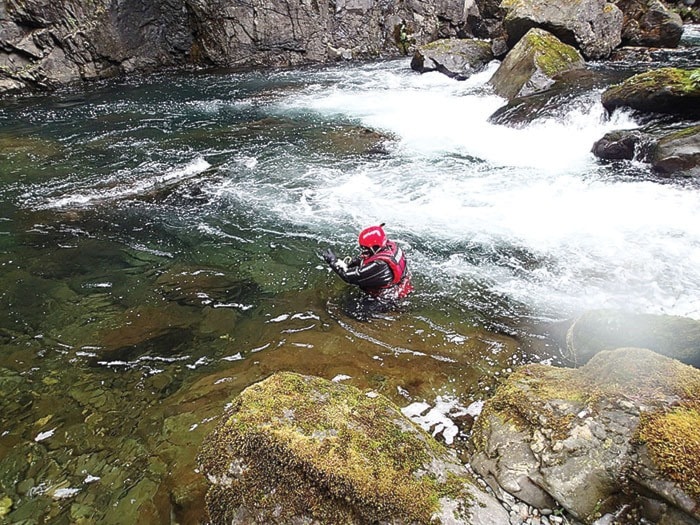BC Hydro will be releasing water down the Elk Falls Canyon next week in five, two-day “pulses” to accommodate steelhead migration.
The water releases from the John Hart dam intended for steelhead are planned to begin the evening of Tuesday, March 3 and continue each Tuesday evening through Thursday evening until completion on April 2.
A public river safety advisory is in place from John Hart dam to Elk Falls during the migration flows. The public is advised to stay away from the river at this location during the migration flows. Safety signage will be in place.
The minimum fish habitat flow down Elk Falls Canyon is 4 m3/s until April 1 when it increases to 7 m3/s for two weeks. For the migration pulse flows it will be increased to 10 m3/s. Out of consideration for public safety, BC Hydro will increase the water discharge from the dam on Tuesday evenings.
Meanwhile, BC Hydro provided an over of its Elk Falls Canyon smelt and spawner abundance assessment.
This 10-year project will be conducted each February to June and will allow BC Hydro to monitor steelhead, chinook and coho spawner and smelt abundance in the Elk Falls Canyon.
The main purposes of the survey are to determine:
- If base flows of 4 m3/s are sufficient to increase juvenile rearing habitat to near maximum values.
- If the fish migration and spawning pulse flows trigger the upstream migration of spring and fall spawners.
- If the spawning flow is effective at increasing available spawning habitat to spring spawners.
- If resumption of base flows following the spawning release keep fish eggs adequately wetted
- If general fish productivity within this river stretch from Elk Falls to the generating station has increased.
The data that is to be collected over 10 years is expected to determine whether the operational change from the 3.5 m3/s base river flow in the canyon with no fish migration pulse flows, to the slightly higher base flow with seasonal migration flows, benefits fish. The study is to monitor the correlation between flow, rearing habitat and behavioural response in fish from the different flows. BC Hydro started operating under the new water license, as a result of the Campbell River Water Use Plan, in January 2012.
A BC Hydro fisheries consultant, in collaboration with BC Parks, will be conducting the study with equipment and fish snorkel surveys. The study began August 2014 with an assessment of fish collection methods through the fall of 2014. There were also snorkel surveys in September through December 2014, and February 2015 for stock assessments and spawner enumeration. Swims in November and December were planned around spills in the canyon to ensure the safety of the data collection team. Assessment of smolt outmigration was expected to start late February and conclude sometime in June 2015.
The estimated cost of the spawner and smolt abundance assessment, over the 10-year study period, is about $2 million.
